How to fish the Horseshoe Falls Pool on the Welsh Dee at Llangollen
Introduction
The Horseshoe Falls Pool is the first pool on Llangollen-Maelor Angling club’s middle beat of the Welsh Dee, which extends up to the tail of Duncan’s Pool.
It’s a great place for fly fishing for grayling, trout, and salmon; especially from the right bank. However, it does get fished heavily because of close proximity to the main parking area. Therefore, as the season progresses, grayling and trout wise up quickly and fly fishing the pool becomes challenging.
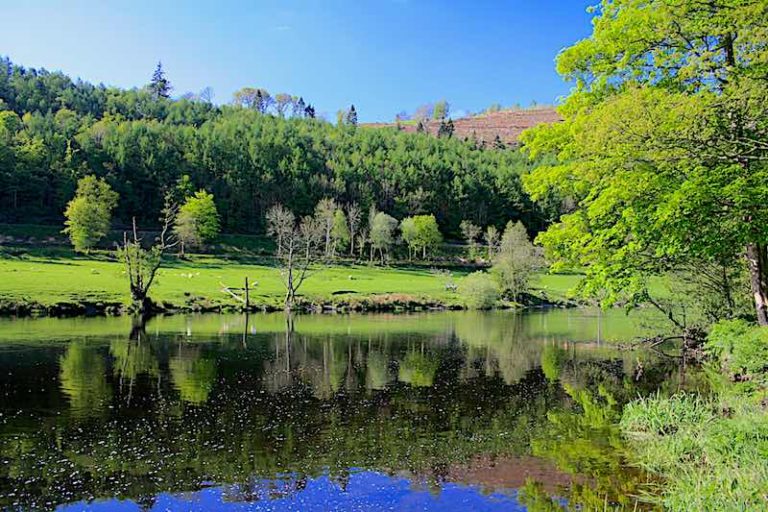
However, over the years I have caught some cracking grayling & trout, and my PB Welsh Dee sea trout (5.5lbs) from this pool.
Salmon are often seen jumping in this pool but they are not easy to catch on the fly, because many of the lies are very difficult to cover with the fly. I have had a few salmon take the fly but I’ve only managed to land one salmon to date.
How to get to Horseshoe Falls Pool?
To access the right bank take the A5 to Corwen from Llangollen, then just after the junction with the B5103, by Berwyn Station, take the next right and park on the left alongside the railway. Walk down the lane to the first style, which takes you down to the tail of the pool.
Access to the left bank is through the marked gate at Llantysillio Church, followed by a 10-minute walk upriver to just past Duncan’s Pool. At the end of this guide, a Google direction locator has been added to further help with directions.
How to fish Horseshoe Falls Pool for grayling and trout:
I usually fish the HSF pool with the fly from the right bank because most of the left bank is heavily tree-lined.
A large proportion of this pool can be fished from the safety of the bank with dry and wet flies. There are a few places on the right bank that I fish by careful wading when the river is running low (summer level < 0.55m @ Corwen gauge) and clear.
In high water, there is no need to wade because trout and grayling lie in the slacker water close to the banks.
Fishing from October to February:
May attention turns to fly fishing for grayling from October to the end of February on the Welsh Dee.
The pool above HSF usually holds a good head of grayling. Therefore, it’s a pool I often fish especially when the river level is between 0.8 and 0.55m (Corwen gauge).
The approach I take to fly fish HSF is influenced by a combination of factors:
- time of year,
- river conditions, and
- signs of surface fly activity.
My Welsh Dee fishing log shows there is a clear transition between autumn and winter on how I fish the pool above HSF.
Fly fishing in October:
During October on the Welsh Dee fly hatches are still common on most days. The flies you are likely to see hatching include:
- Iron Blue Dun
- Pale Watery Dun
- Egg-laying Stoneflies
- Midges
The approach to fly fishing the HSF pool depends on river height, water and weather conditions. On Octobers mornings it tends to be a cool start and fly hatches don’t really get going until mid-morning.
Wet Fly fishing:
If I’m on the river before 10 am I will start fishing the tail of the pool from the bank with a team of wet flies and work my way upriver to the head of the pool.
My default wet fly recommendation is the following team of three flies cast on 3lb copolymer (point: March Brown spider #14; middle dropper: black hopper #14; top dropper: claret spider #16).
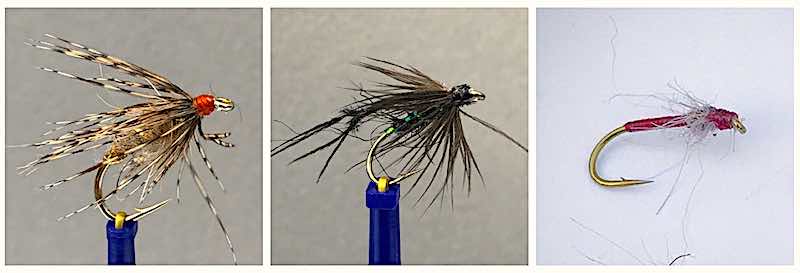
Dry Fly fishing:
Once flies are observed hatching I will switch to targeting rising grayling with the dry fly; initially by casting from the bank. Ideally, it’s best to try and identify the flies that are being taken and tie on a suitable imitation.
If that is not possible I usually start with a CDC olive merger pattern that has served me, and if that doesn’t work I start working through my fly box. However, it is rare not to catch a grayling on one of the three following patterns:

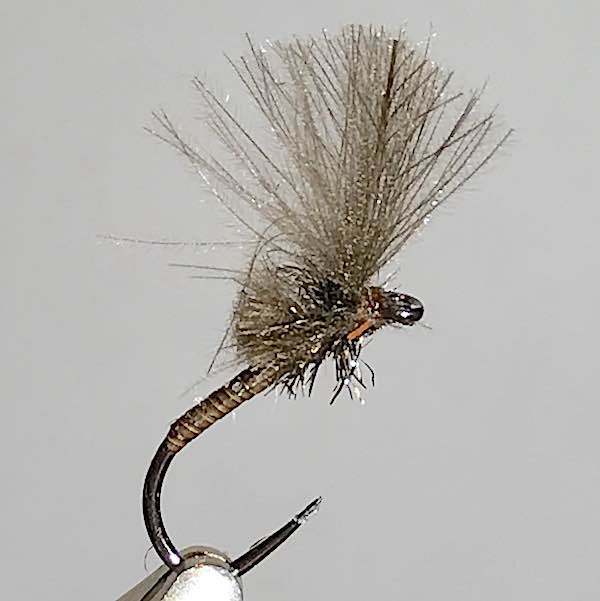

Euro (Czech) nymphing:
On rare occasions when it’s not possible to tempt grayling from the HSF pool with either of the above approaches, it is necessary to switch to fishing nymphs close to the riverbed.
In places, this can be achieved from the bank but usually, it is necessary to wade out to fish the pool in some places when the river is below 0.6m (Corwen gauge). This should only be done if you are experienced at wading.
When the river is in flood and coloured (>0.8m Corwen gauge) I find Euro (Czech) nymphing is the best approach. However, under such conditions, the fishing is limited to the tail of the pool.

Check out the link below for additional reading on flies for October:
Fly fishing the Horseshoe Falls Pool in November:
The clocks go back at the end of October and the days get increasingly shorter during November. With aquatic life becoming dormant for winter, fly hatches are sparse, and grayling are increasingly searching the riverbed for food: nymphs, larvae, worms etc.
Fishing for grayling during November can be a great sport because they have to feed hard to ensure they are in peak condition for spawning in spring.
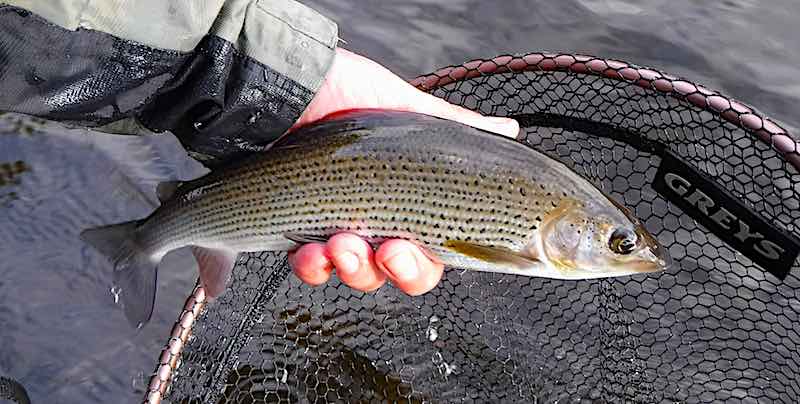
On November mornings fishing a team of nymphs close to the riverbed often yields the best results.
Sporadic hatches of olives usually occur around lunchtime on mild days. If this happens then switching to fishing dry or wet flies often is the best approach.
For more information on the flies to use on the Welsh Dee during November check out the following article:
Fly fishing during December,January & February:
Once winter sets in, the Welsh Dee is more often than not in flood during the winter months and I rarely fish Horseshoe Falls Pool because I’ve found other pools to be more productive (i.e. Duncan’s Pool, Dee Farm).
My only exception would be when the river level is between 0.8 and 1m (Corwen gauge). Then, fishing the inside bend of the tail of the pool with a team of Czech nymphs can produce some good grayling.
For more information on the flies to use on the Welsh Dee during winter check out the following articles:
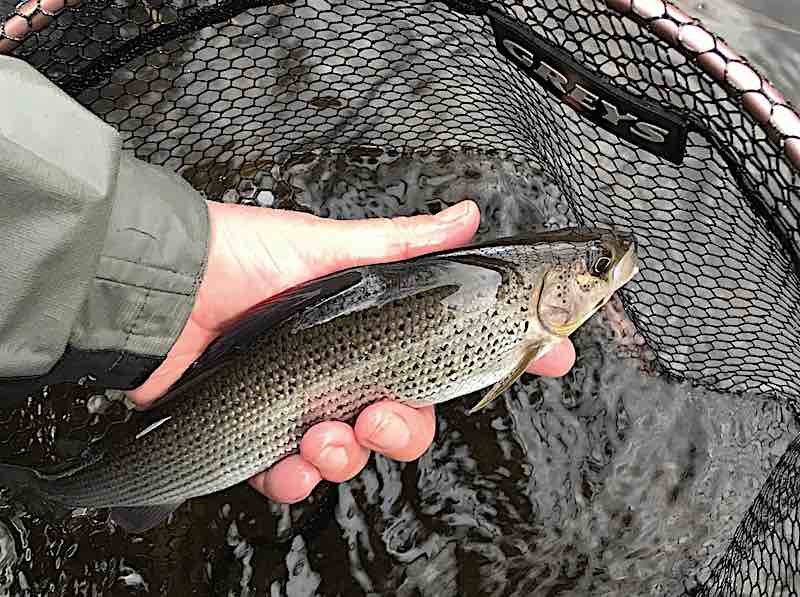
Fishing Horseshoe Falls Pool from March to September:
March signals the start of spring and the brown trout fishing season on the Welsh Dee (3rd March). However, the weather in March is often more like winter than spring; and you can be greeted with snowfall all the way into April.
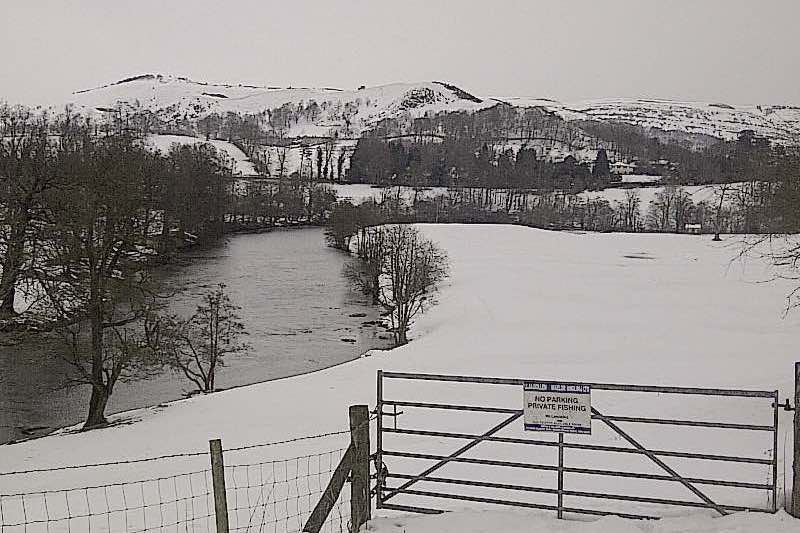
Fly fishing in March:
My approach to fishing Horseshoe Falls Pool brown trout in March is similar to that described for autumn & winter grayling in the previous sections i.e. it very much depends on the weather and river conditions.
On mild days, hatches of large dark olives and March Browns usually start around 11 am and when the river is below 0.6m (Corwen gauge) you are likely to see trout rising for them.
During these hatches, fishing the Horseshoe Falls Pool with either a dry fly (large dark olive or March Brown pattern) or a team of wet flies on a floating line often yields some beautiful over-wintered brown trout.
In the absence of a hatch, I will try my luck fishing a team of wet flies on a floating line; often with a heavy point fly (e.g. Black Pennell with 2-3mm tungsten bead, weighted pheasant tail nymph).
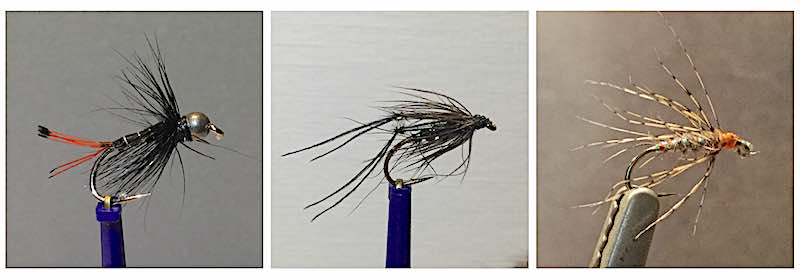
For more information on the fly selection for fishing HSF during March check out the following article:
Fly fishing the Horseshoe Falls Pool in April:
Once April arrives, the weather usually starts to warm up and hatches of Large Dark Olives, March Brown and other olives become more prevalent from mid-morning to mid-afternoon. Hence, providing more opportunities to catch brown trout on the dry fly, by matching the hatch.
When the river is at its summer level, the top section of the HSF pool is mostly less than 4ft in depth away from the deeper channels. As such, trout are easily spooked into the shelter of the deep channels.
Therefore, it’s always best to cover as much of the pool by casting from the bank, before deciding to wade out and fish closer to the far (left) bank.
More information on the fly selection for fishing HSF during April is covered in the following post:
Fly fishing the Horseshoe Falls Pool in May:
As the weather warms up during May, fly hatches become prolific and brown trout are eager to fatten up on the emerging fly life. Examples of flies you will see include:
Upwinged flies:
- Blue-winged olive
- Large dark olive
- Medium olive
- Iron Blue Dun
- Pale Watery Dun
- Olive Upright
- Yellow May Dun
Sedges:
- Black sedge
- Grannaom
- Cinnamon sedge
- Medium sedge
Others:
- Hawthorne fly
- Alderfly
- Large stonefly
- Midges
As a result of all the fly-light, May is when dry-fly and upstream wet-fly fishing produce the best catch results, when you have identified which flies the trout are taking.
The river flows toward Horseshoe Falls in an easterly direction. Therefore when fishing from the right bank the sun will be behind you from 11 am to 3 pm. This makes it very difficult to approach the pool without being seen by any fish.
Consequently, on bright sunny days, I only fish Horeshoe Falls Pool early in the morning or after 5 pm, and usually the best fish are caught in the evening.
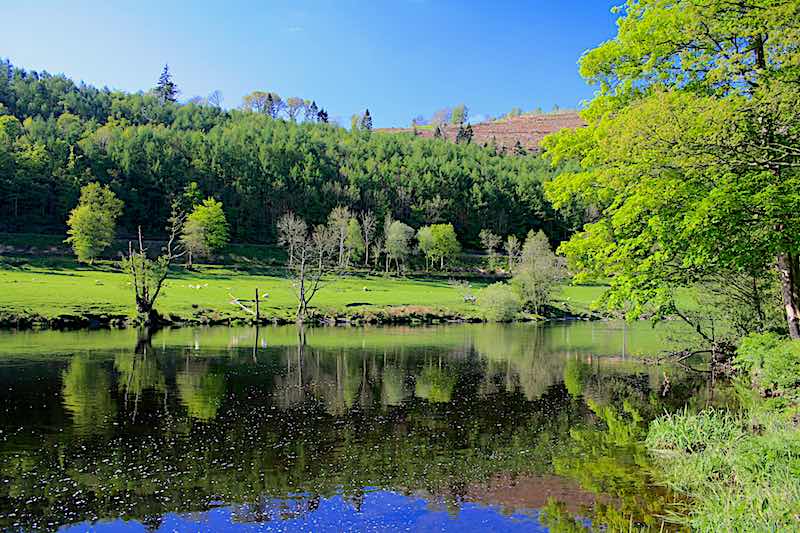
On overcast days, the fishing can be good from morning to dusk but I often just fish this pool in the evening.
Fly fishing during June and August:
During the summer months, the pool above HSF receives a significant amount of attention from visiting anglers because it is the first pool they come to from the main parking area. As a result, trout and grayling have become very wary and extremely difficult to catch until…
the last hour of day light.
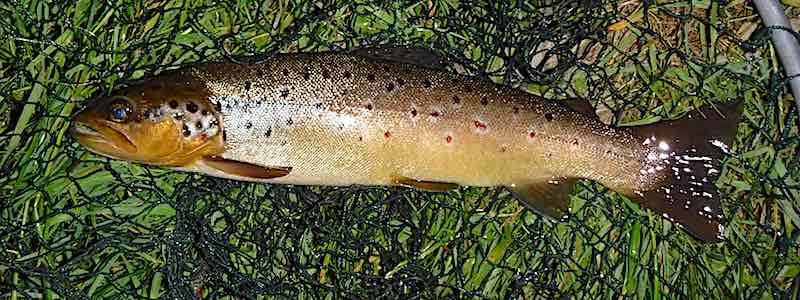
As darkness starts to creep in the pool can come alive with trout and big grayling taking sedges until the light has completely gone.
You also stand a good chance of catching a bonus sea trout to the 2lb mark during this period.
More information on the fly selection for summer is covered in the following posts:
How to fish the Horseshoe Falls Pool for sea trout:
The main run of Welsh Dee sea trout start to populate the pools above Llangollen during July and a few sea trout collect in the pool HSF.
When the light fades I usually fish the top section of the pool for sea trout from the bank and then wade out to fish as close to the tree-lined left bank as possible. It’s not easy to wade because there are underwater gullies and rocks to navigate.
Over the years I’ve had several sea trout from this pool. Including my PB sea trout (5.5lbs) caught fishing a surface lure on a floating line.
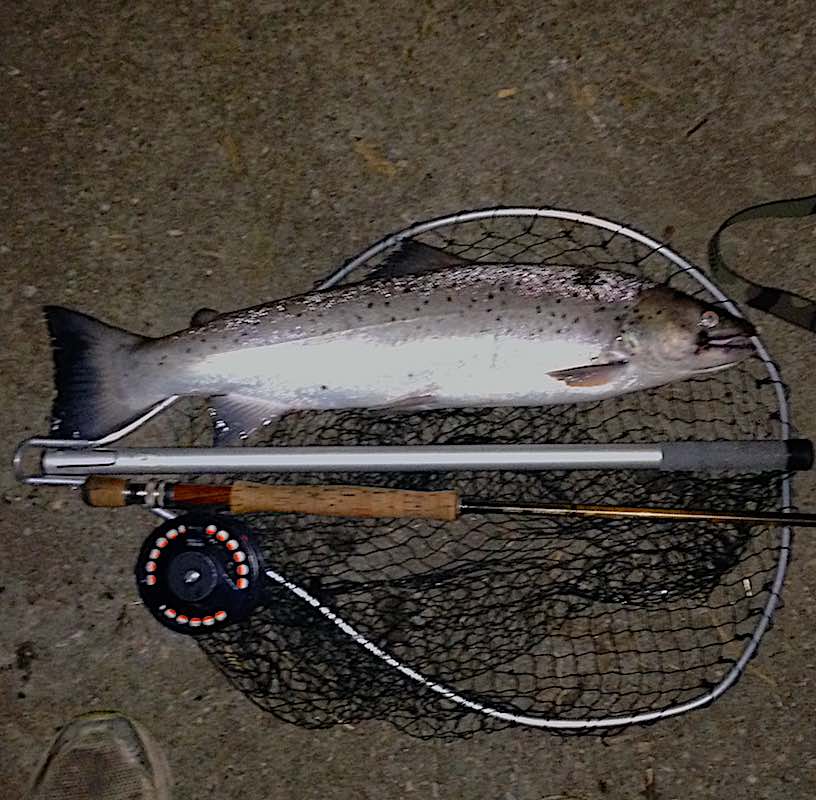
How to fish the Horseshoe Falls Pool for Salmon:
Every year, I see resident salmon jumping in the pool above HSF but they are not easy to catch on the fly, because many of the lies are very difficult to cover with the fly.
I have had a few salmon take the fly but have only managed to land one salmon (5lbs). It was caught fishing a stoats tail on a sink tip line.
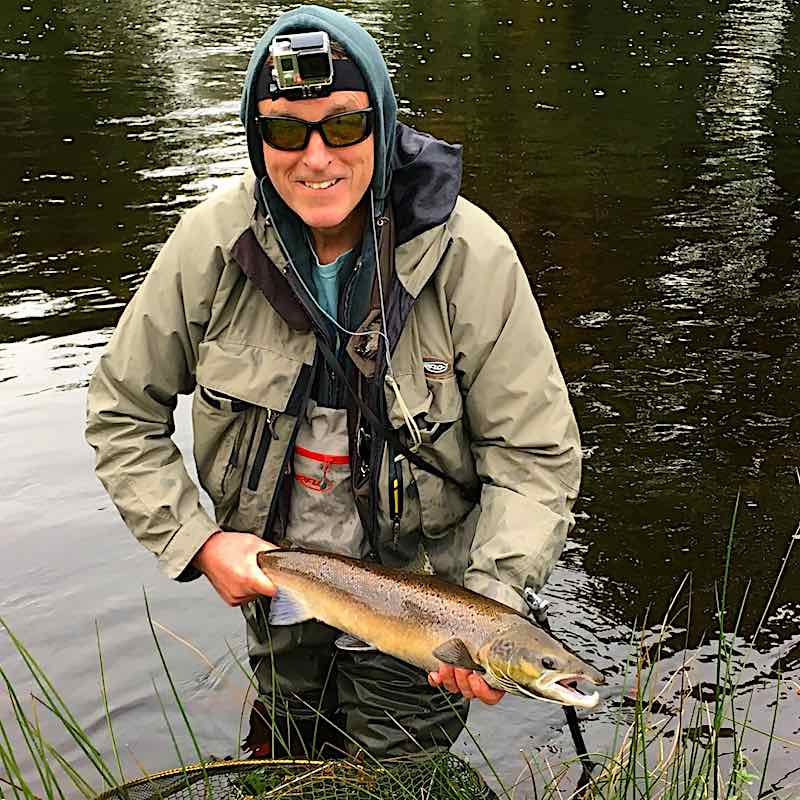
I usually fish this pool from September with the fly from the right bank, when the river level is between 0.6 and 0.9m (Corwen gauge). It is not a deep pool, thus I either use a floating line with a 12ft copolymer tapered leader (12lb tip) or a sink-tip line.
For fly selection I use this simple strategy:
- In clear water I use size 10 or smaller drab coloured fly (e.g. Stoats tail, Blue Charm, etc)
- In coloured water a size 10 or higher brightly coloured fly (e.g. Cascade, Park shrimp etc).
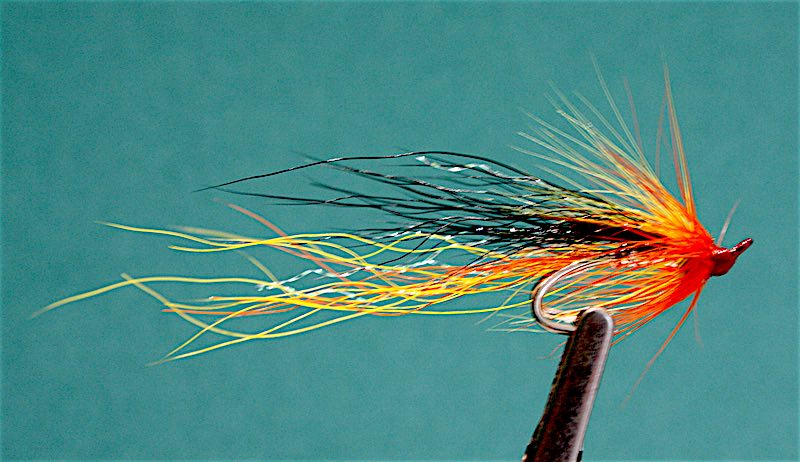
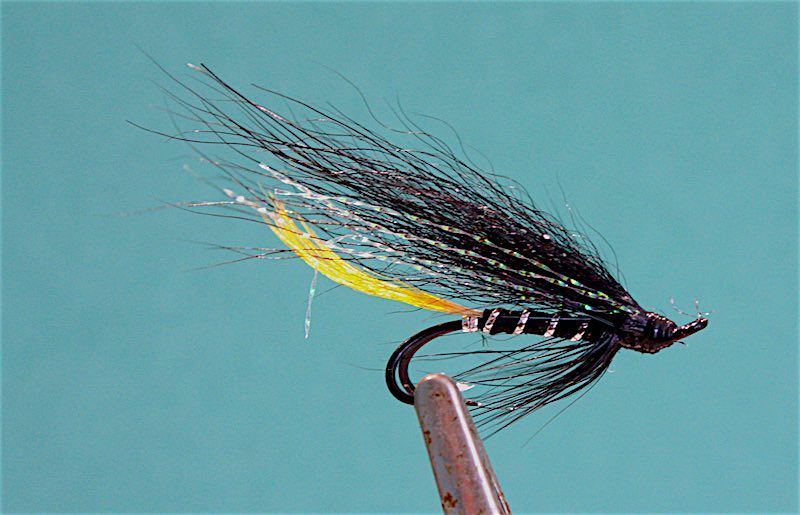
Directions and Parking to Horseshoe Falls Pool:
From Llangollen take the A5 to Crown then just after the junction with the B5103 by Berwyn Station take the next right and park on the left alongside the railway.
The right bank is best accessed by parking just after the railway bridge, followed by a 50m walk down the lane to the style taking you into the field leading down to the river.
The left bank is best accessed through the marked gate at Llantysillio Church followed by a 10-minute walk upriver to the style into the next field. This fence marks the first opening between the trees it is possible to fish with the fly. A map of this pool can be found on the Llangollen-Maelor Angling website.
Like most outdoor sports, fishing is not without its hazards. Therefore, YOU MUST DO YOUR OWN RISK ASSESSMENT before starting to fish the Horseshoe Falls Pool. Especially if you decide to wade and/or fish at night. In addition, you must follow the Llangollen-Maelor Club Rules when accessing and fishing this water.